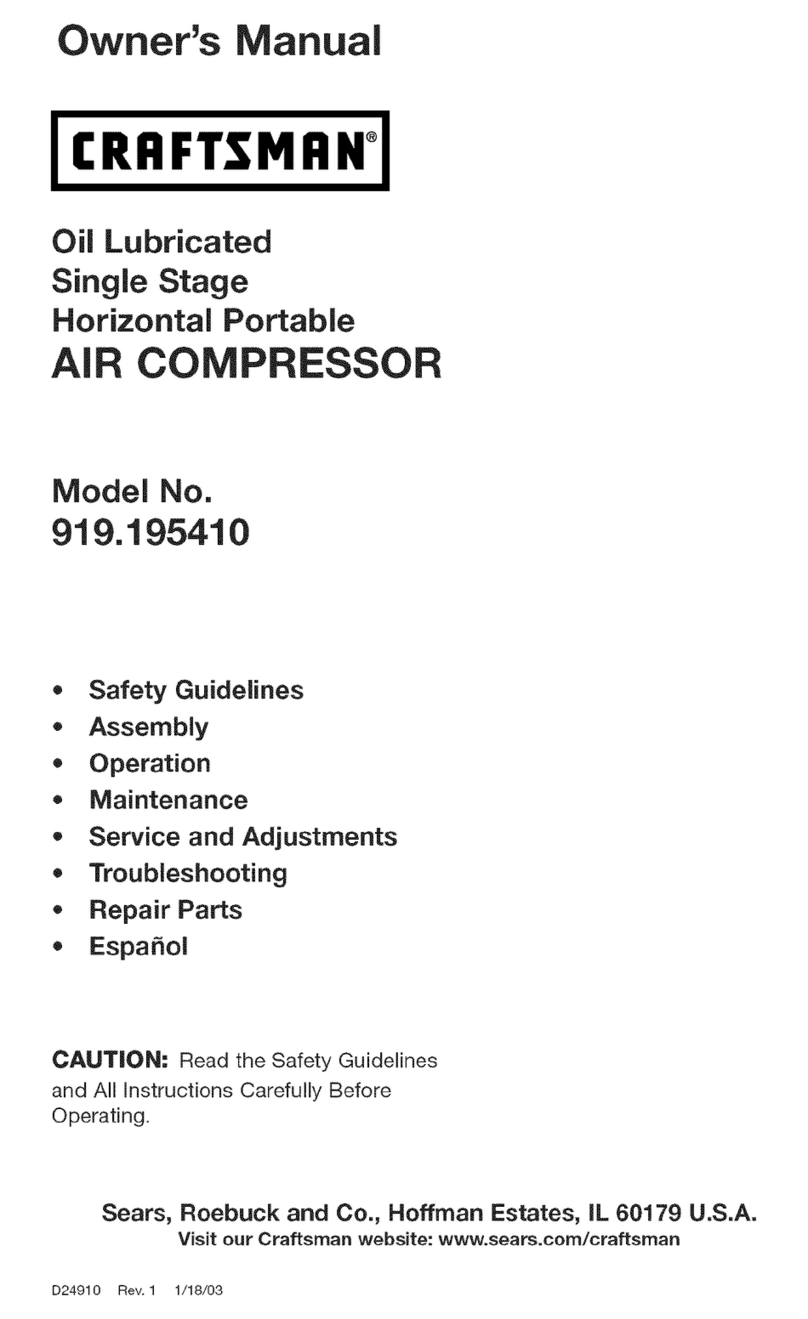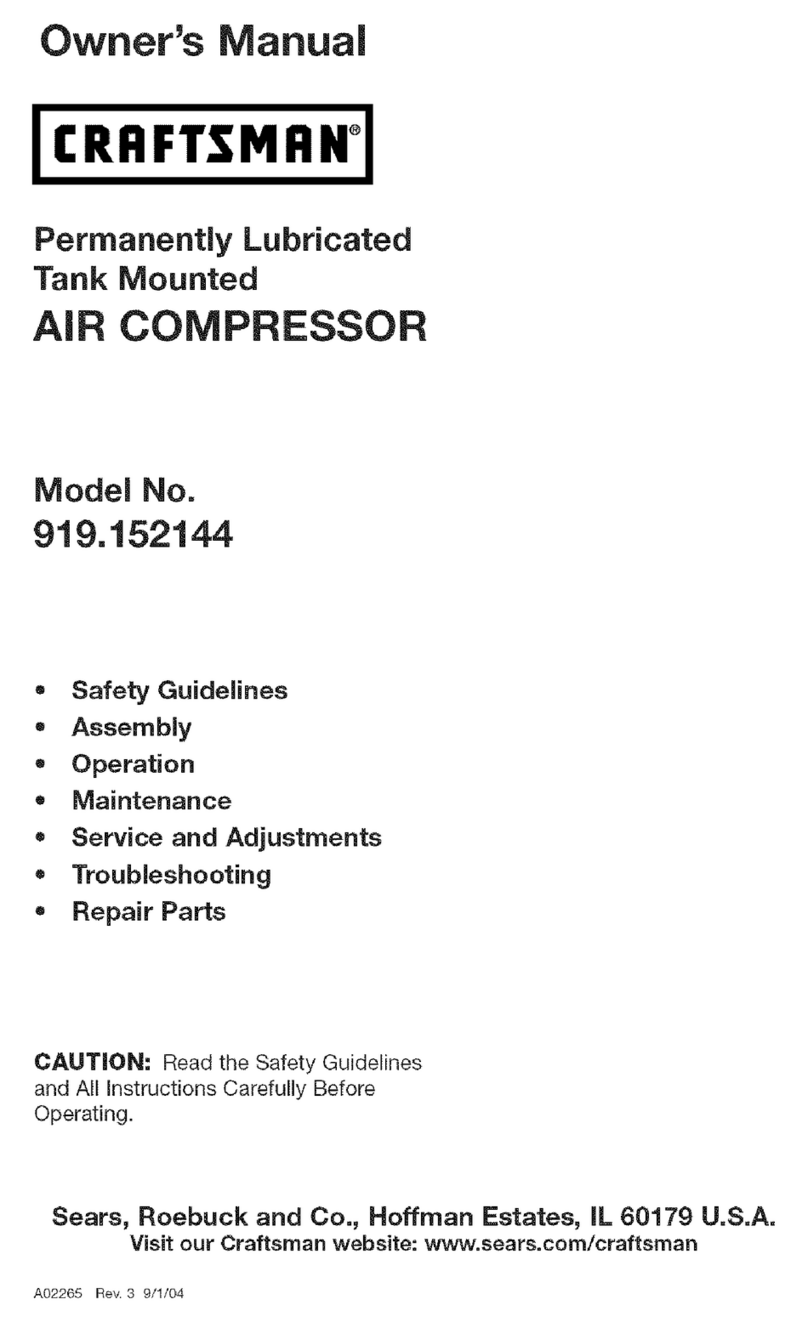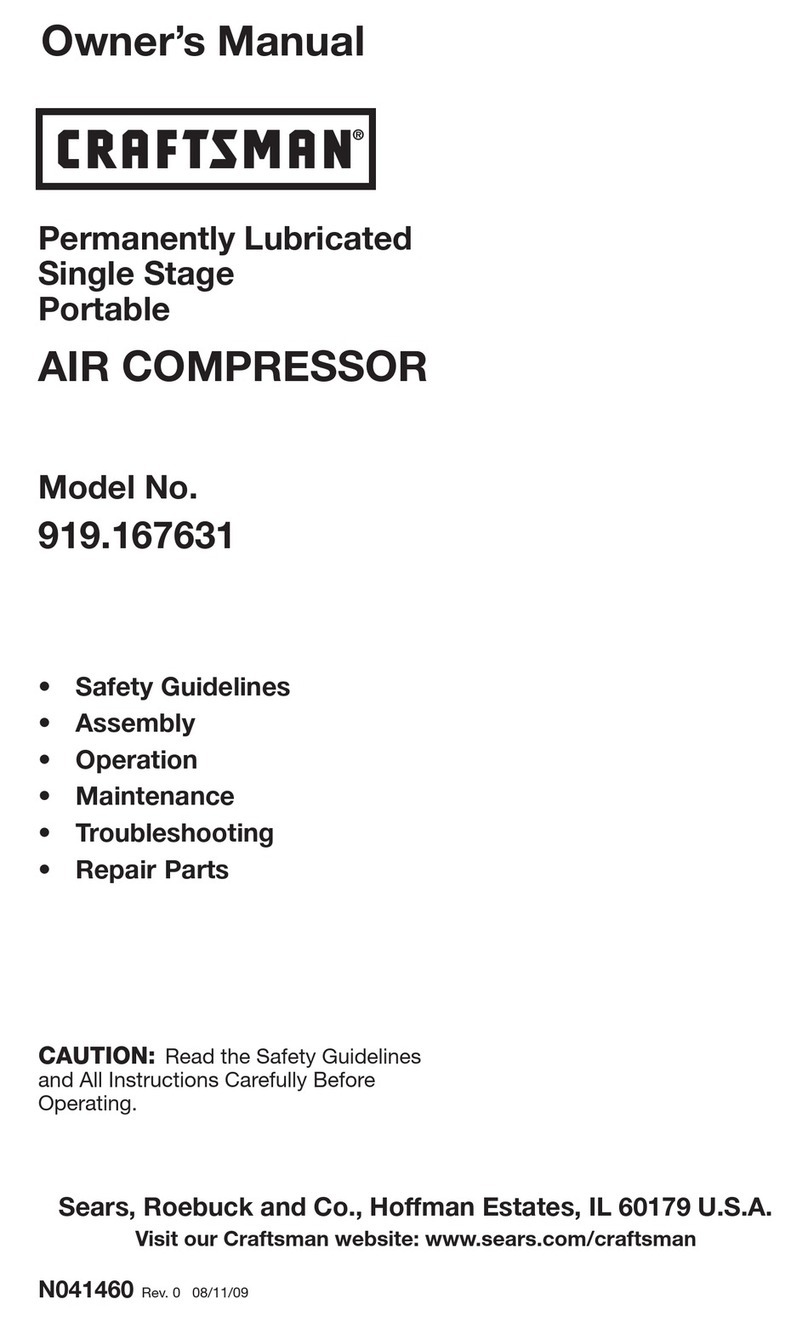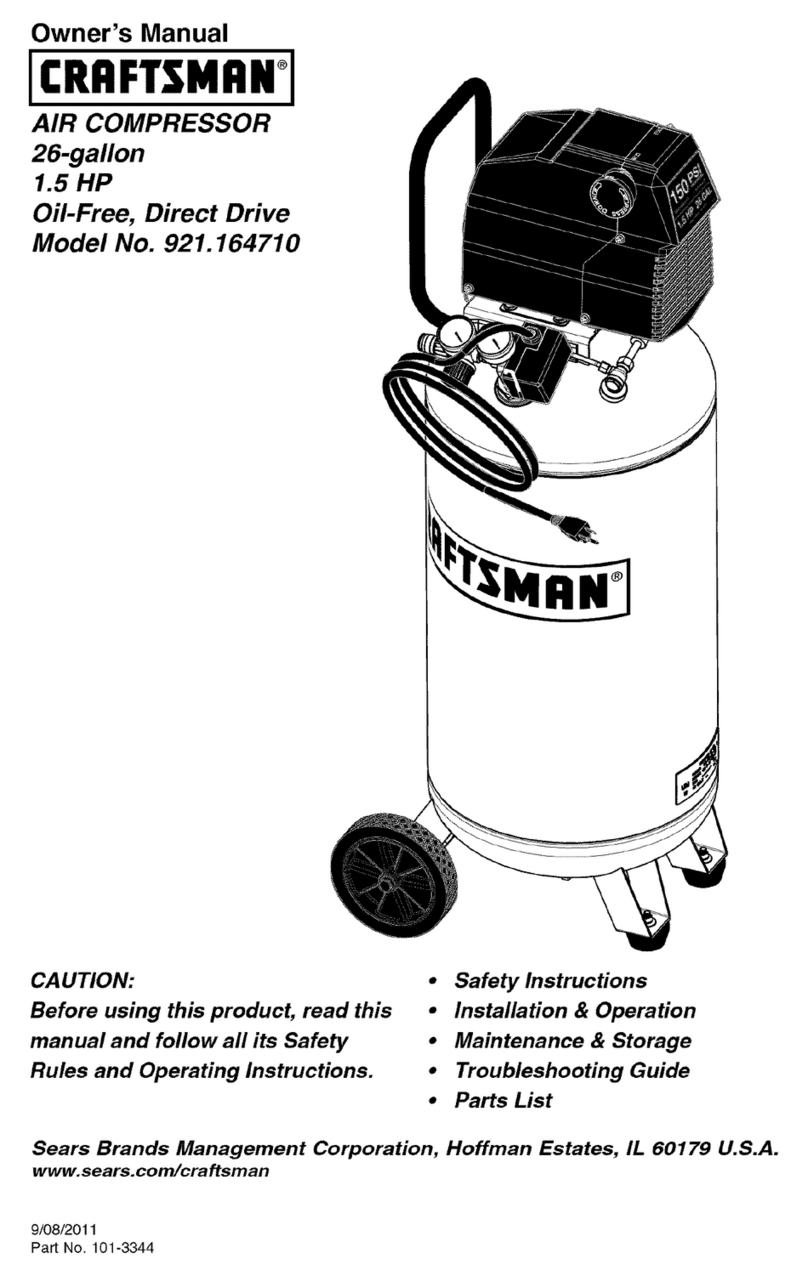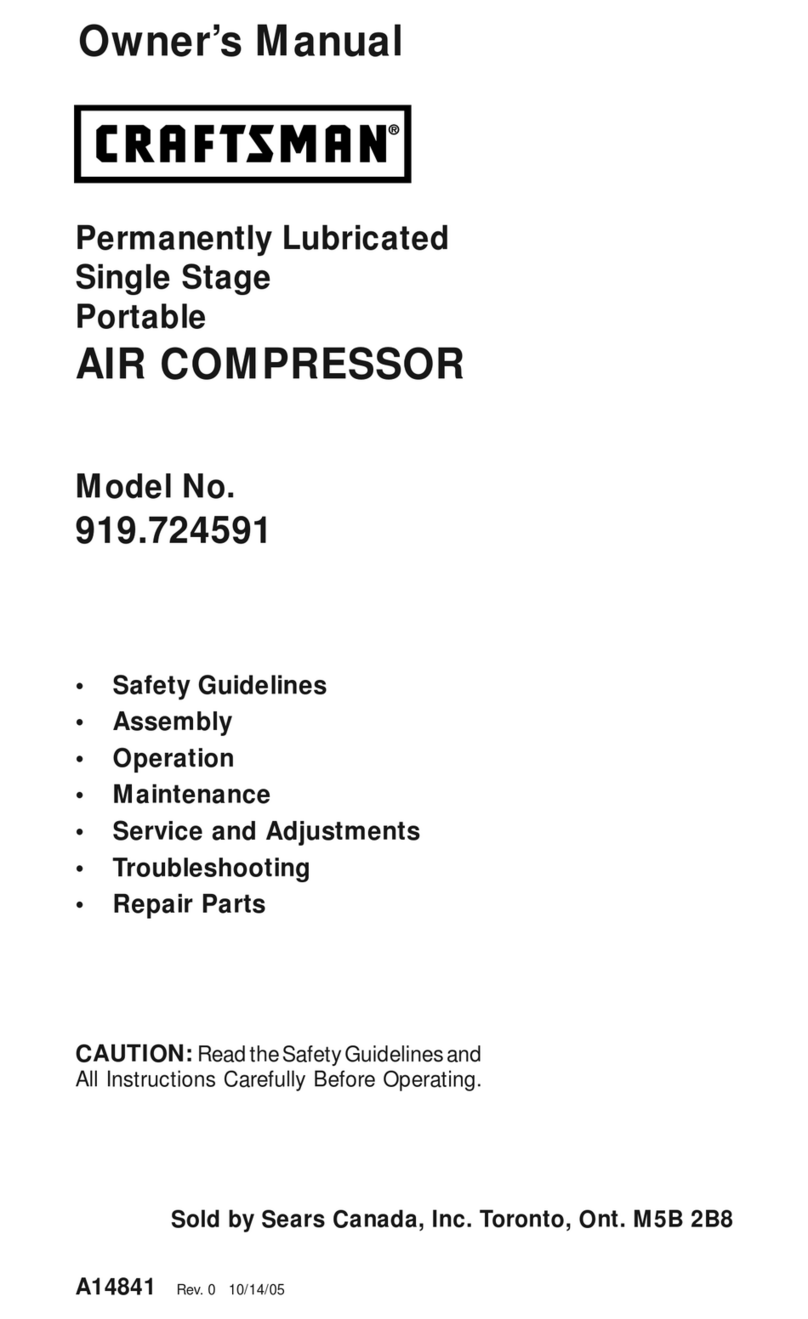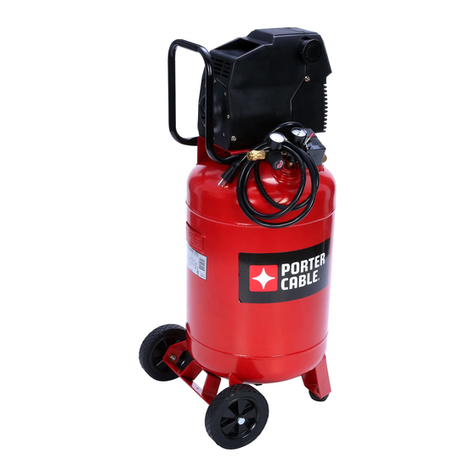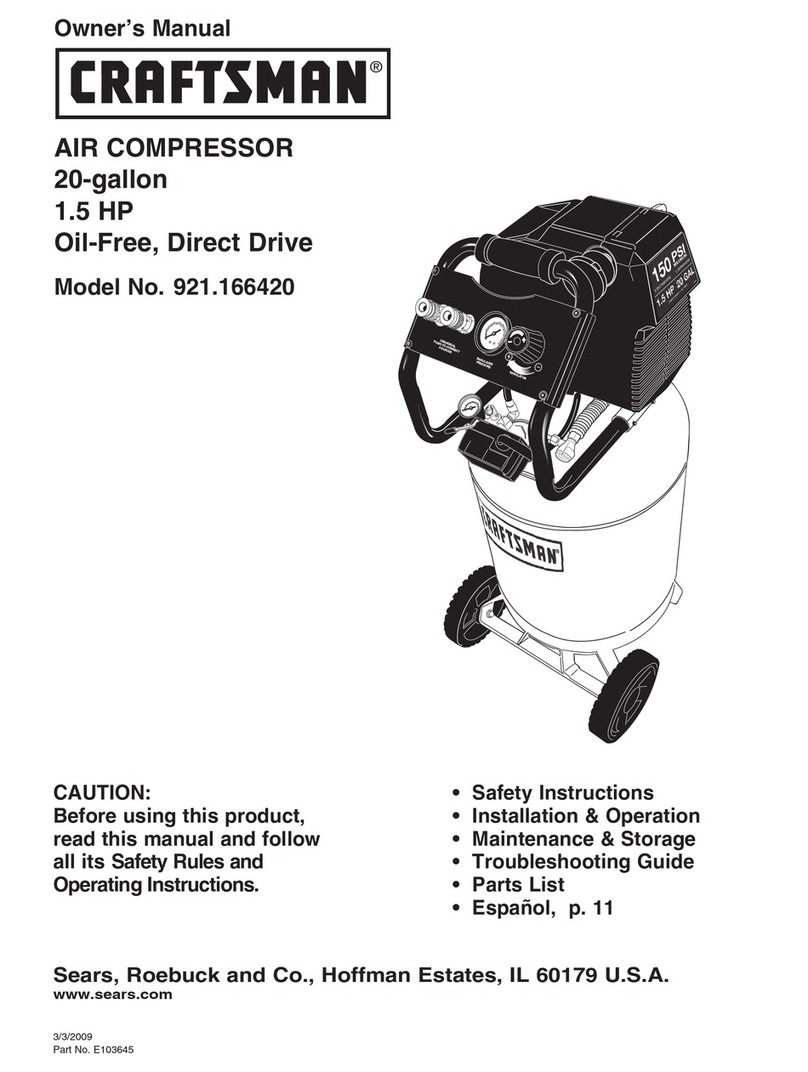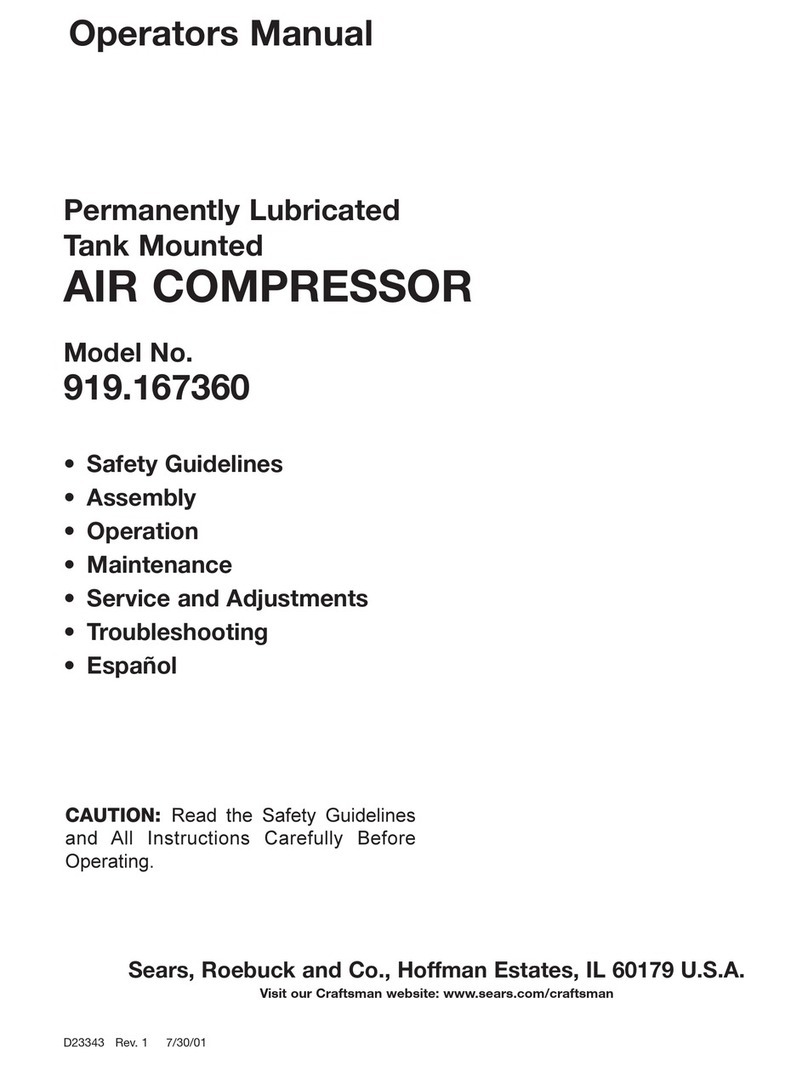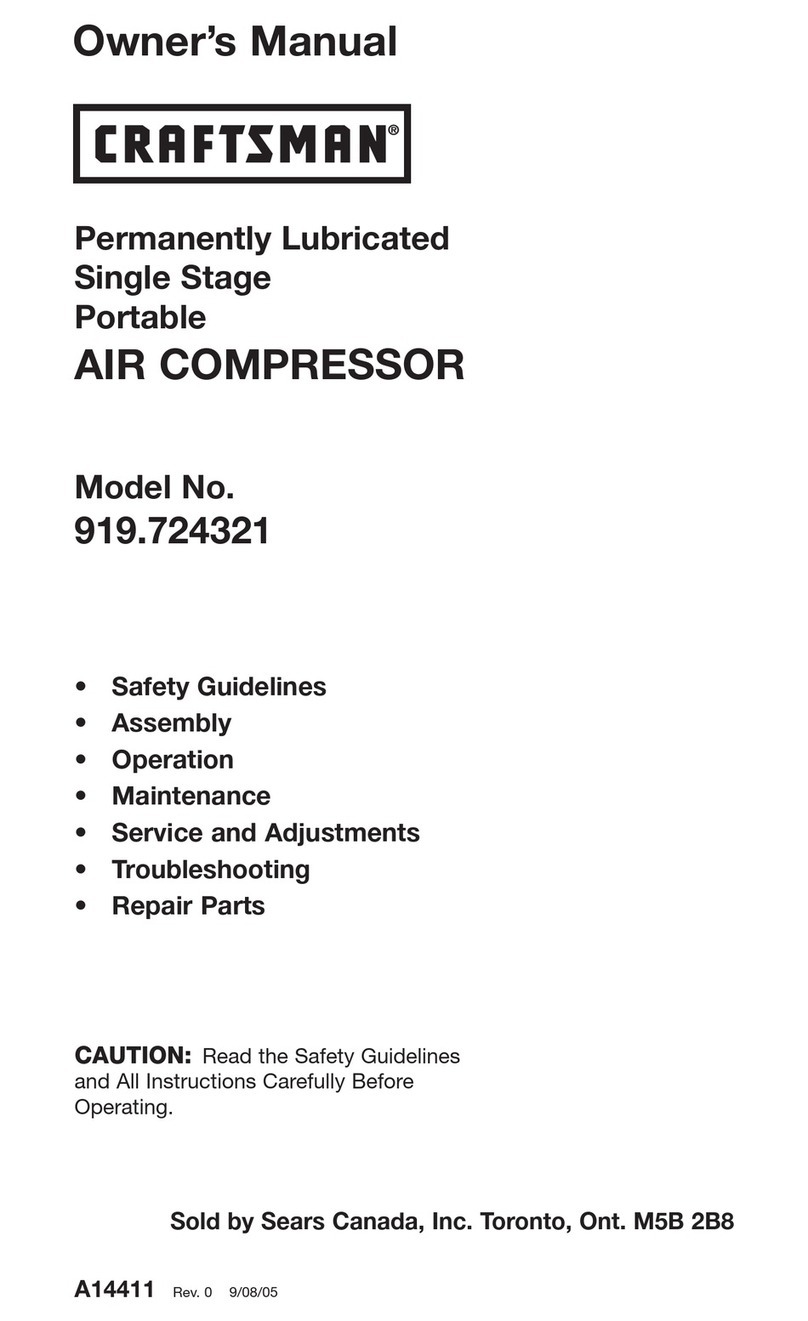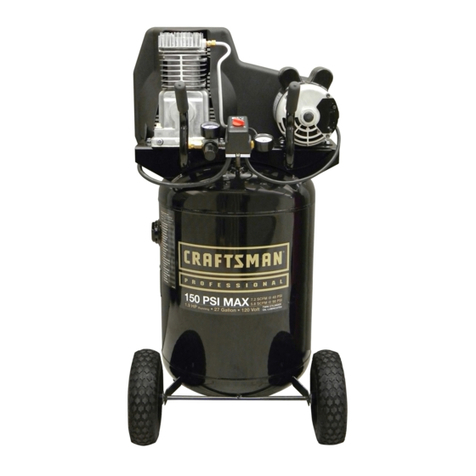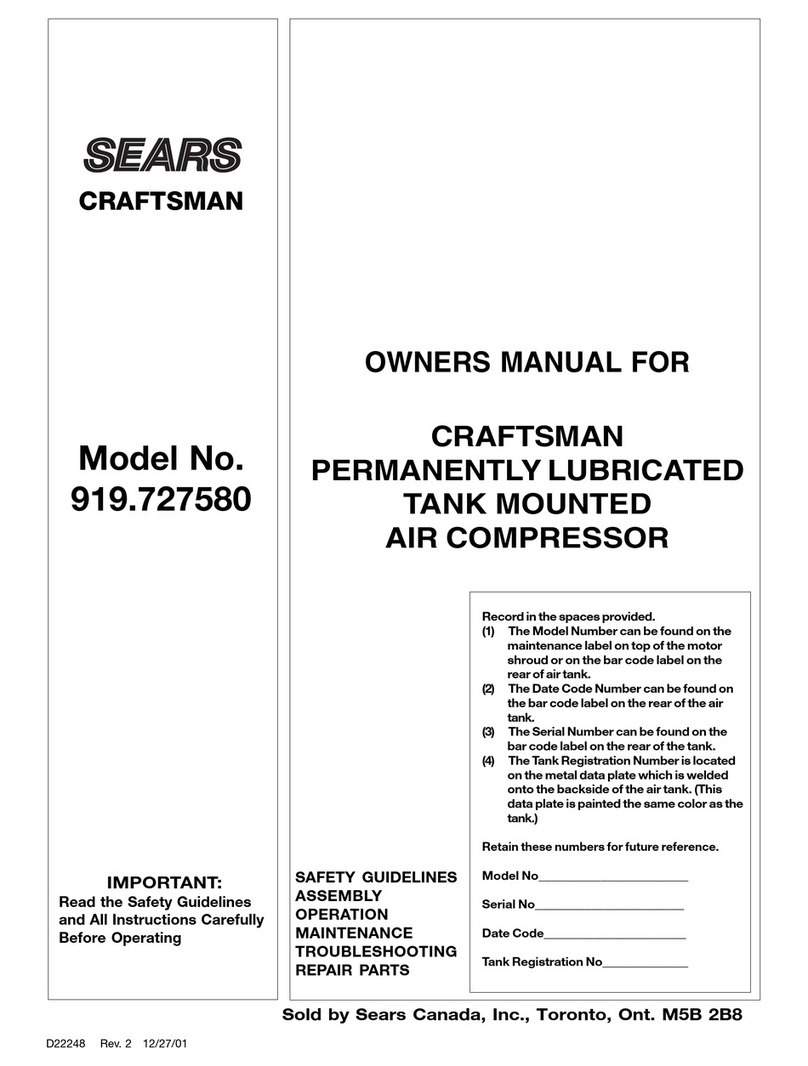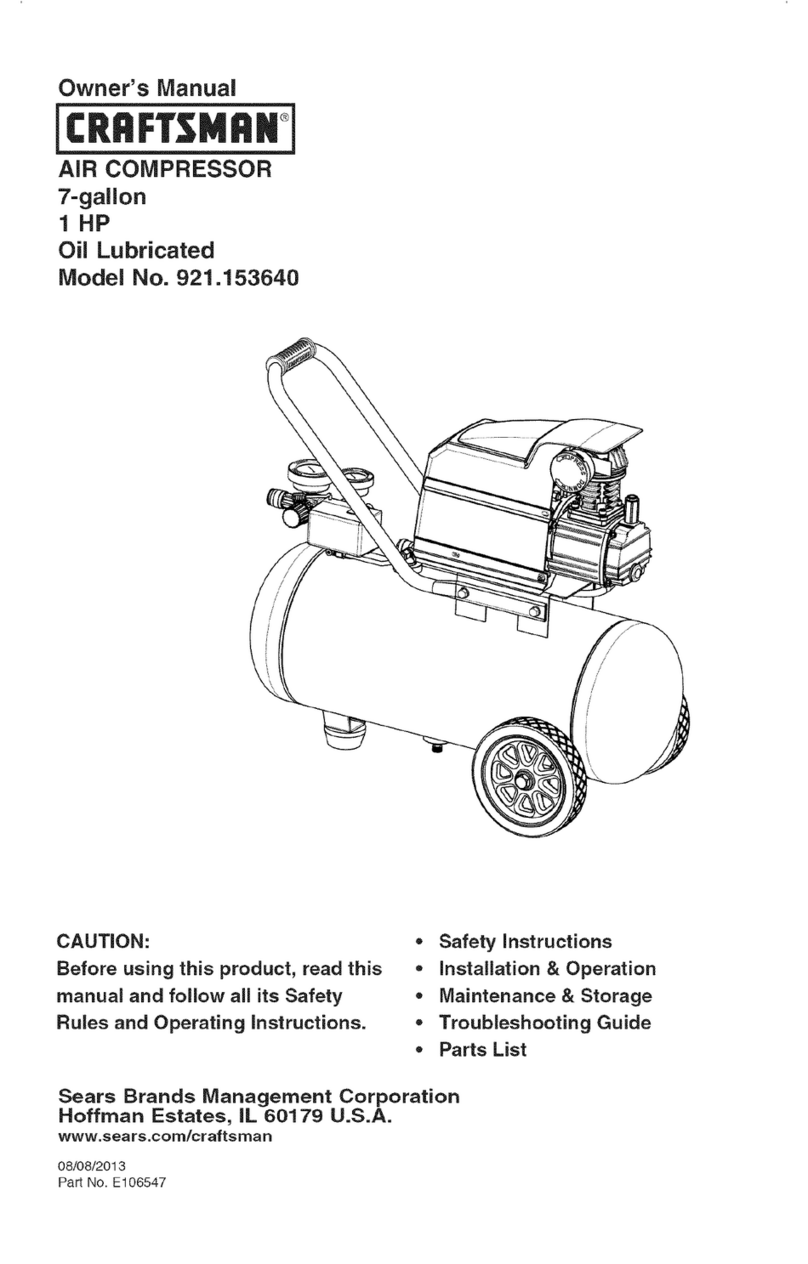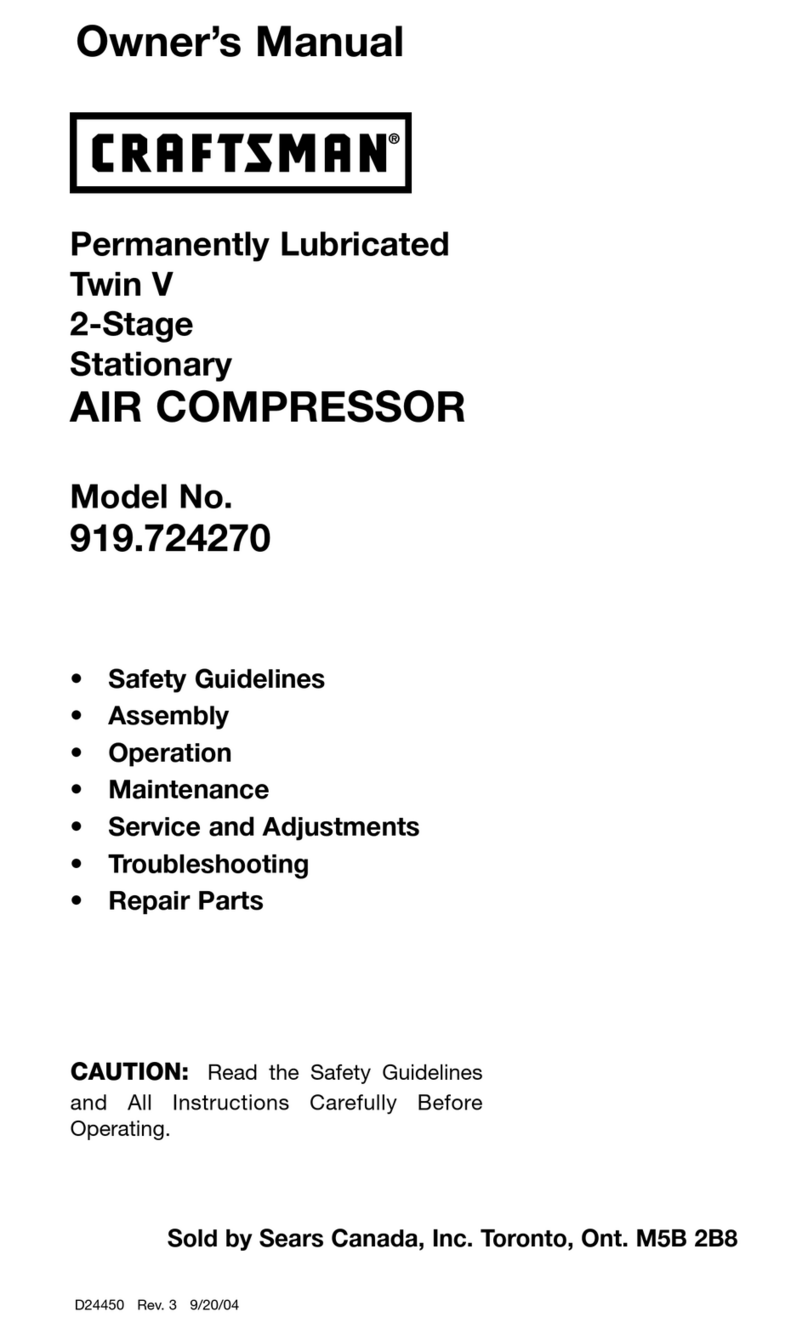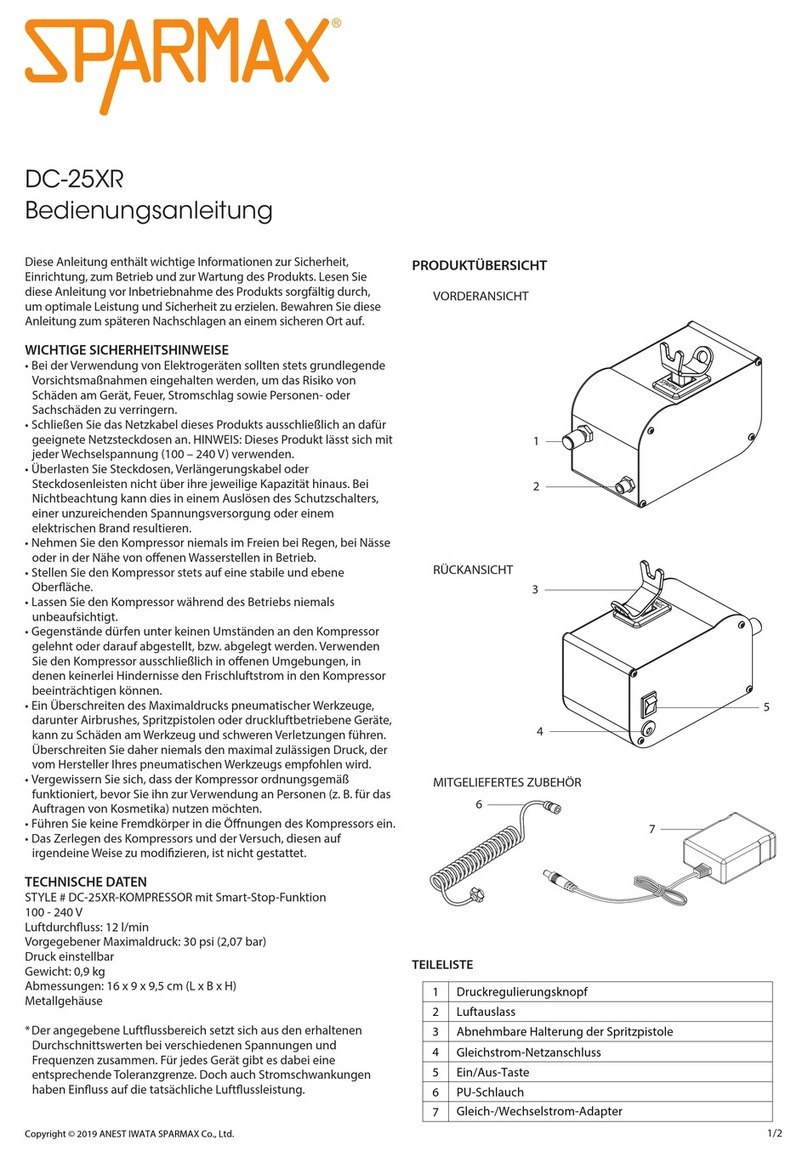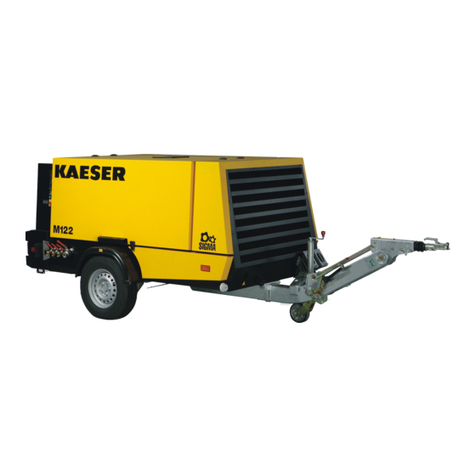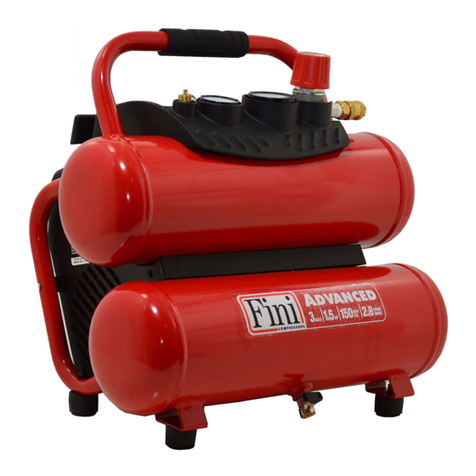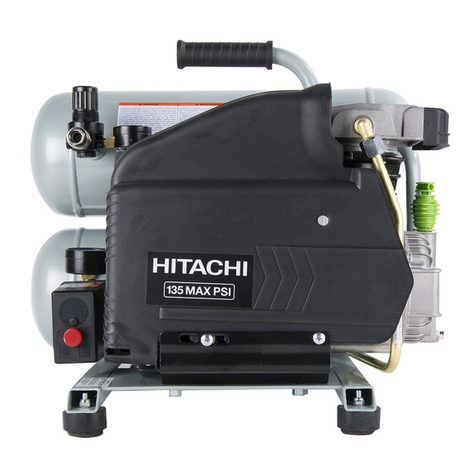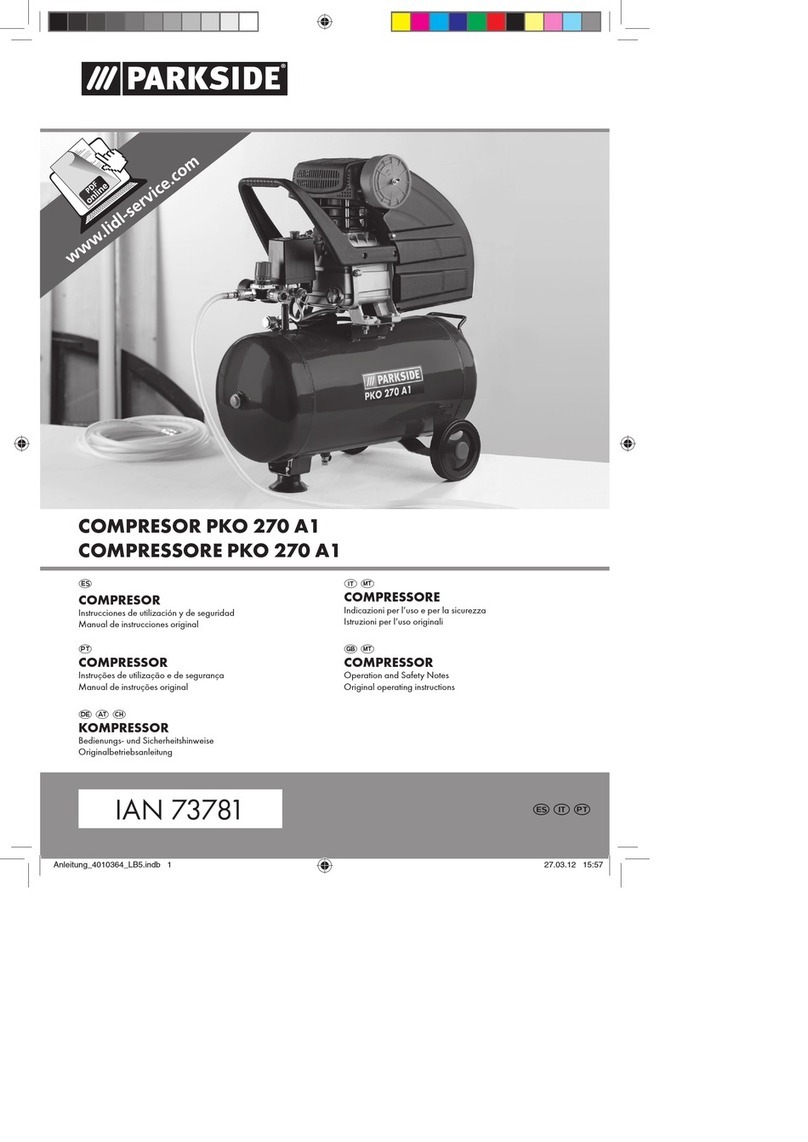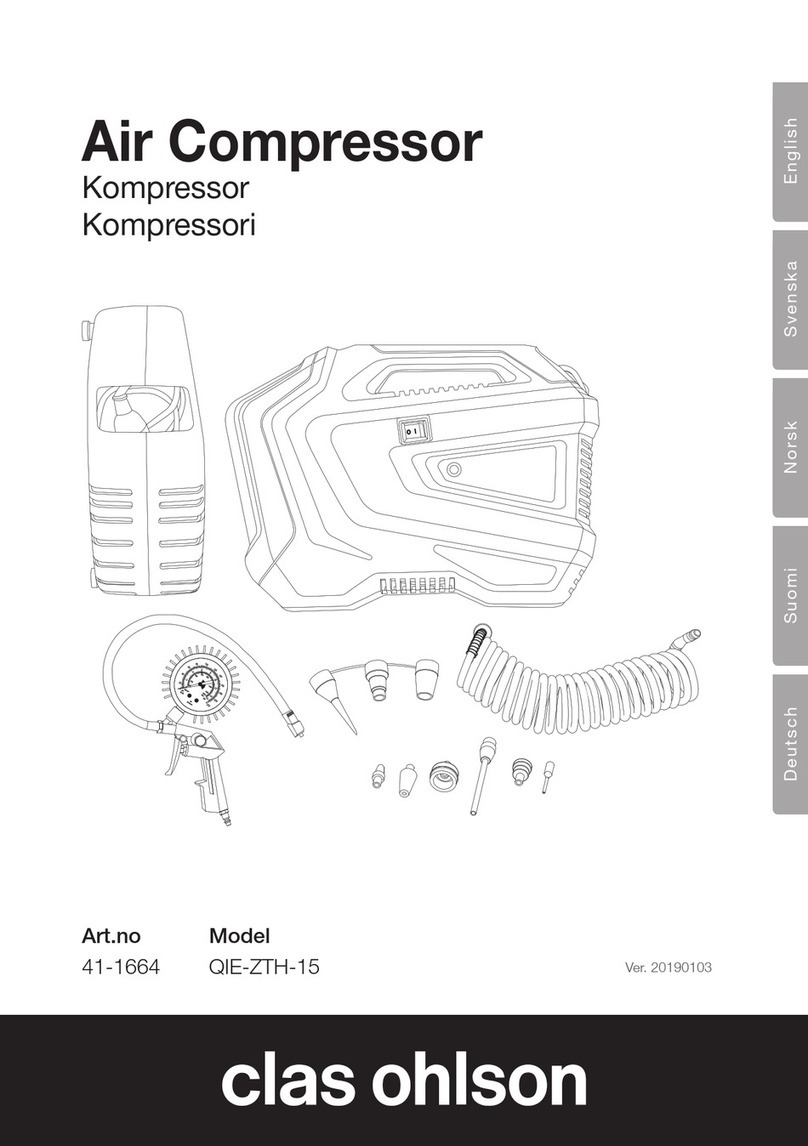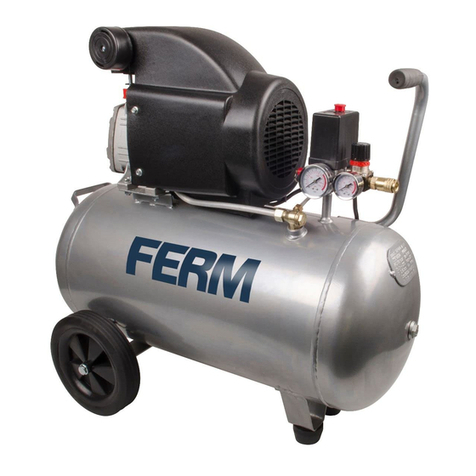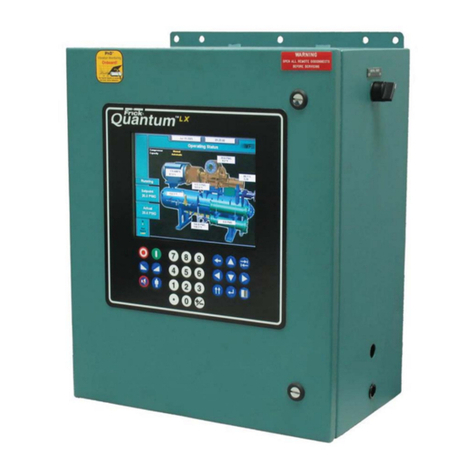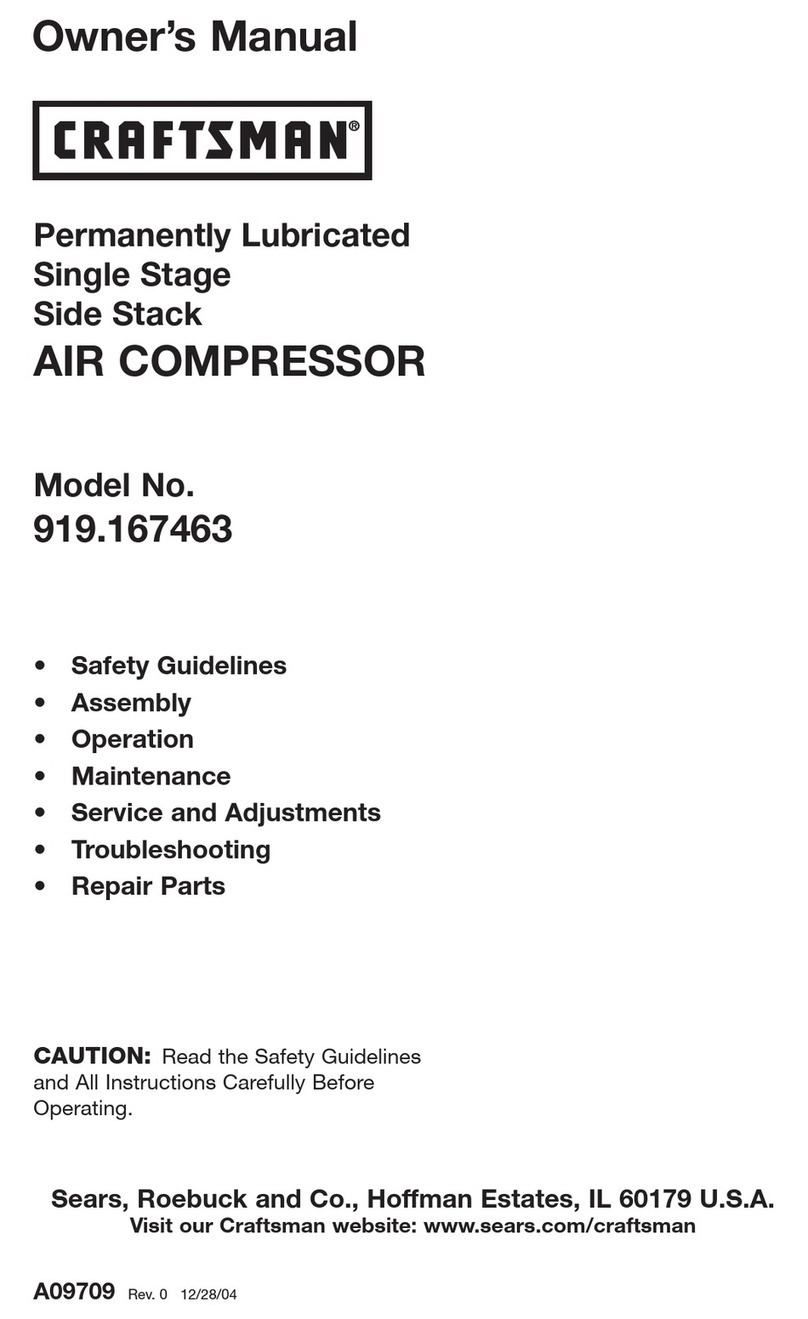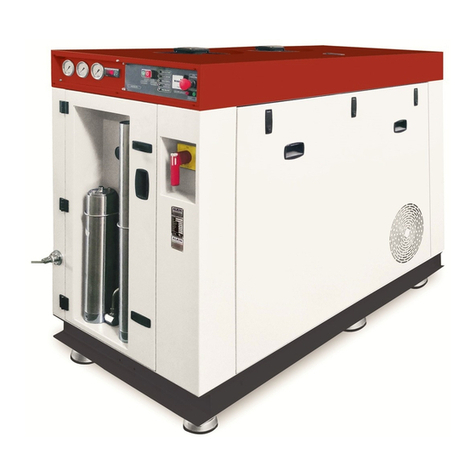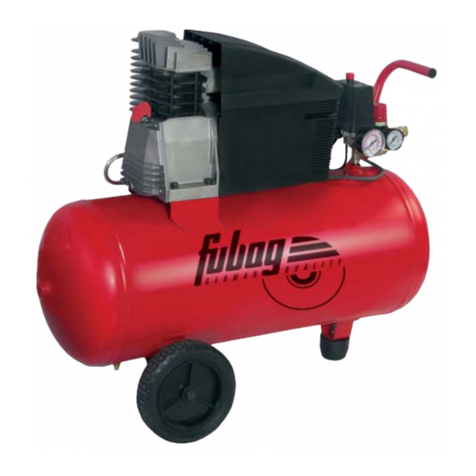DESCRIPTION OF OPERATION
Air Compressor Pump: To compress air, the piston
moves up anddown inthe cylinder. On the downstroke, air
isdrawn inthroughtheairintake valves. The exhaust valves
remain closed. On the upstroke of the piston, air is
compressed. The intake valves close and compressed air
isforced outthrough the exhaust valves, throughthe outlet
tube, throughthe check valve and intotheairtank. Working
air isnot available until the compressor has raised the air
tank pressure above that required at the air outlet.
Check Valve: When the air compressor isoperating, the
check valve is"open",allowing compressed airto enterthe
air tank. When the air compressor reaches "cut-out"
pressure,the checkvalve "closes", allowingair pressureto
remain inside the air tank.
Pressure Release Valve: The pressure release valve lo-
cated on the side of the pressure switch, is designed to
automatically release compressed air from the compressor
head and the outlet tube when the air compressor roaches
"cut-out" pressure or isshut off. Ifthe air is not released, the
motor will not be able to start. The pressure release valve
allows the motor to restart freely. When the motor stops
running, airwill be heard escaping from the valve for a few
seconds. No air should be leaking when the motor is
running.
PressureSwitch: The pressure switch automatically starts
the motor when the air tank pressure drops below the
factory set "cut-in" pressure. Itstops the motor when the
airtank pressure reaches the factory set"cut-out"pressure.
Safety Valve: If the pressure switch does not shut off the
air compressor at itscut-out pressure setting, the safety
va lyewillprotectthetankagainst highpressureby"popping
out" at its factory set pressure (slightly higher than the
pressure switch cut-out setting).
Regulator." The air pressure coming from the air tank is
controlledby the regulator. Turn the regulator knobclock-
wise to increase pressure and counter-clockwise to de-
creasepressure.To avoid minor readjustment aftermaking
a change inpressure setting, always approachthe desired
pressure from a lower pressure. When reducing from a
highertoa lowersetting, first reduce to some pressure less
than that desired, then bring up to the desired pressure.
Depending on the air requirements of each particular
accessory,theoutletregulatedair pressure may havetobe
adjusted while operating the accessory.
Outlet Pressure Gauge: The outlet pressure gauge indi-
cates the air pressure available at the outlet side of the
regulator. This pressure iscontrolled bythe regulator and
isalways lessor equalto the tank pressure. See "Operat-
ing Procedures".
Tank PressureGauge: The tank pressure gauge indicates
the reserve air pressure in the tank.
Cooling System: This compressor contains an advanced
design cooling system. At the heart of this cooling system
isan engineered fan. It isperfectly normal forthis fan to blow
air through the vent holes in large amounts. You knowthat
the cooling system is working when air is being expelled.
Tools Needed for Assembly
•a 9/16" socket or open end wrench for attaching the wheels
•a 3/8" open end wrench or socket to tighten handle screws
